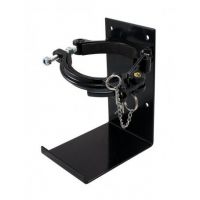Resource Centre
The fire protection industry uses a lot of technical terms, acronyms and abbreviations. We have developed this resource centre to assist. Feel free to contact us to have any items added.
Aeration: The introduction (or entraining) of air into a foam solution to create bubbles that result in finished foam. Also called aspirated foam.
AFFF: Aqueous Film Forming Foam. A synthetic foam concentrate containing detergent and fluorocarbon surfactant that forms foam capable of producing a vapour suppressing aqueous film on the surface of some hydrocarbon fuels. Provides rapid flame knockdown on short preburn, shallow spill fires (eg. aircraft crash fires), but not suited for use on long preburn, deep-seated fires (eg. storage tank fires).
AGM Battery: Absorbed Glass Mat battery. Different to regular batteries because the electrolyte liquid (battery acid) is absorbed into the glass mats like a sponge instead of the sulphuric acid being free floating as in a conventional battery.
ARC: Alcohol Resistant Concentrate. A foam concentrate for use on polar solvents in addition to hydrocarbons.
ASE: Alarm Signalling Equipment.
Aspirated Foam: Foam blanket obtained by mixing water, foam concentrate, and air. Expansion ratio typically 2:1 or more. Also called Finished or Expanded Foam.
Baseline Data: Data derived from the approved design and commissioning, which serve as a basis for subsequent comparison with the data derived from inspection, test and survey.
BGU: Break Glass Unit.
BIC: British Instantaneous Coupling also called BI Coupling.
Biodegradable: Capable of being broken down into innocuous products by the action of living creatures such as micro organisms.
C6: This is a name for any chemical with a carbon backbone consisting of 6 carbon atoms. This commonly refers to fluorinated foam utilising C6 chemistry. C6 foam can be identified by the 'C6 compliant' label.
C8: This is a name for any chemical with a carbon backbone consisting of 8 carbon atoms. This commonly refers to fluorinated foam utilising C8 chemistry.
CAFS: Compressed Air Foam System.
Class A Fire: A fire involving materials such as wood, paper, rubbish etc.
Class B Fire: A fire involving a flammable or combustible liquid.
Class C Fire: A fire involving flammable gas.
Class D Fire: A fire involving a combustible metal such as magnesium, sodium, lithium, potassium, etc.
Class E Fire: A fire involving energised electrical equipment.
Class F Fire: A fire involving cooking oils or fats.
Combustible Liquid: Liquid having a flash point at or above 37.8°C.
DFES: Department of Fire and Emergency Services.
ECO: Emergency Control Organisation.
ER: Expansion Ratio. The ratio of final foam volume to original foam solution volume before adding air.
EWIS: Emergency Warning and Intercommunication System.
FFF: Fluorine Free Foam. Fluorine free foams are manufactured not using any added fluoro surfactants.
FFFP: Film-Forming FluoroProtein. A natural protein based foam concentrate containing fluorocarbon surfactants that forms foam capable of producing a vapour suppressing aqueous film on the surface of hydrocarbon fuels.
FIP: Fire Indicator Panel.
Fire-isolated stairway: means a stairway within a fire-resisting shaft and includes the floor and roof or top enclosing structure.
Flammable Liquid: Any liquid having a flash point below 37.8°C.
Flash Point: The temperature at which the vapours of a liquid can ignite.
Foam Solution: A mixture of water and foam concentrate in the correct proportions. Called Premix Solution when in storage.
Forestry Foam: Foam concentrate for use on Class A fuels in vegetation and structural fires.
FRL: Fire Resistance Level. Means the grading periods in minutes for the following criteria:- structural adequacy (staying up), Integrity (preventing spread of fire) and Insulation (tranfer of heat).
Ground Monitor: A monitor designed to be operated at ground level.
Hazmat: Hazardous Material.
Hydrocarbon: Fuel based exclusively on chains or rings of linked hydrogen and carbon atoms. Hydrocarbon fuels are not miscible in water.
Inductor: A device (portable or fixed) that introduces foam concentrate into the water stream. Also called Eductor or Proportioner.
IBC: Intermediate Bulk Container 1,000 litre capacity container used to supply foam concentrates (or other industrial liquids).
Induction Rate: The percentage of foam concentrate mixed or introduced into the water supply line to produce foam solution. Also referred to as Proportioning Rate or Eduction Rate or Pick Up Rate.
K-Factor: The flow rate through a piece of equipment divided by the square root of the pressure (or in other words the volume of water that passes through a piece of equipment in one minute at 1 bar pressure). Also called Discharge Coefficient.
kPa: Kilopascal, a unit of pressure.
LPS: Litres Per Second.
MCP: Manual Call Point.
Monitor: A portable, fixed or truck mounted device to which a large nozzle is attached to allow the operator to direct the water or foam as required.
Non-Aspirated: Foam with expansion ratio in the range 1-2:1. The only aeration is the result of air entrainment and impact. Only film forming foam concentrates are suitable for nonaspirating applications. Also referred to as Unaspirated.
OWS: Occupant Warning System.
PFOA: Perfluorooctanoic acid, also known as perfluorooctanoate, is a synthetic perfluorinated carboxylic acid. This is a C8 contaminant found in some fire fighting foams.
PFOS: Perfluorooctanesulfonic acid or perfluorooctane sulfonate (PFOS) is a man made fluorosurfactant and global pollutant.
Polar Sovlent: A liquid whose molecules possess a permanent electric moment (eg. alcohols, amines, ethers, esters, aldehydes, ketones). In fire fighting any flammable liquid that destroys standard foam is generally referred to as a polar solvent. Polar solvents are generally miscible with water.
SCBA: Self Contained Breathing Apparatus.
SMSB: Site Main Switch Board.
Training Foam: Foam concentrate that is formulated especially for training exercises.
VESDA: Very Early Smoke Detection Apparatus.
WIP: Warden Intercom Point.
The above is provided for customer informative purposes only and Alliance Fire Protection does not accept any liability whatsoever for any reliance which a third party may place on any general guidance which is contained herein. E&OE.

